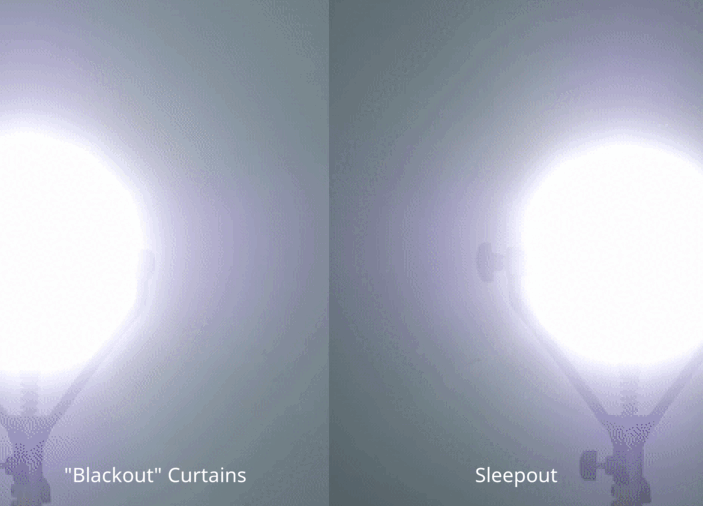Any parent can confirm that the challenges of night-time feedings are real, especially when it comes to putting your baby back to sleep after those daunting 2 AM feedings. While necessary, these late-night moments can disrupt the sleep patterns of both baby and parent, making the next day seem even longer. If you find yourself struggling to get your little one back to dreamland during the wee hours, here are some effective tips that might just help you (and your baby) get some much-needed rest.
1. Create a Soothing Environment
To encourage your baby to fall asleep quickly after feeding, ensure their sleep environment is conducive to rest. The room should be cool, quiet, and dark. Light is one of the biggest enemies of sleep, and even small amounts can signal to your baby’s brain that it’s time to wake up. This is where blackout curtains can be invaluable.

Blackout curtains like the Sleepout Home Blackout Curtains can dramatically reduce the amount of light entering the room, creating an ideal sleep environment. By simulating the night, they can help signal to your baby’s brain that it is time to sleep, not play.
2. Maintain a Calm Atmosphere
Avoid stimulating activities during the night. Keep the lights dim and interaction to a minimum. Gentle whispers, soft movements, and calming touches are key. This tells your baby that it’s still nighttime, not playtime. Any activity, from changing diapers to feeding, should be done quietly and with minimal fuss.
3. Be Efficient with Diaper Changes
If a diaper needs changing during the night, try to do it either before feeding or only if absolutely necessary. Changing a diaper after feeding may wake your baby up too much, making it harder for them to settle back to sleep. Have everything you need close at hand to make the change quick and smooth.
4. Master the Art of Swaddling
Swaddling can be a miracle technique for helping babies sleep better. It makes them feel secure and warm, resembling the womb environment. Ensure you have mastered the art of swaddling correctly and safely. A snug swaddle can prevent your baby from being disturbed by their own startle reflex.
5. Offer a Pacifier
For many babies, sucking is a soothing activity. Offering a pacifier during and after the feed can help them settle back to sleep. Make sure the pacifier is readily available during night wakes so you can offer it quickly without much searching.
6. Use Consistent Sleep Cues
Consistency is key when it comes to baby sleep. Use the same sleep cues every night, such as white noise, a specific lullaby, or scent (like lavender) in the room. These cues signal to your baby that it’s time to sleep.
7. Watch for Sleepy Cues
Learning to recognize your baby’s sleepy cues can help you put them down before they become overtired. Yawning, rubbing eyes, and fussiness can all indicate your baby is tired. When you notice these signs post-feeding, ease them into their crib or sleeping area.
8. Practice Putting Baby Down Awake
Though it may seem easier to rock or feed your baby to sleep, putting them down while they’re still awake but drowsy can teach them to self-soothe and fall asleep on their own. This skill will be invaluable for night-time wake-ups.
9. Be Patient and Consistent
The key to any change in routine is consistency. It may take a few nights for your baby to adjust to new night-time practices. Be patient and keep trying. Consistent routines and environmental cues make a significant difference in the long run.
10. Take Turns with Partners
If possible, share the nighttime duties with a partner. Taking turns can help ensure that both of you get a better night's rest, which can in turn improve your ability to care for your baby throughout the challenging early months.
Remember, every baby is different, and what works for one might not work for another. It might take some time to find the right combination of techniques that work for your baby’s unique needs. With patience and persistence, you will find what works best for returning to sleep after those 2 AM feedings.
Conclusion
Getting your baby back to sleep after a feeding doesn’t have to be a Herculean task. With the right environment, consistent routines, and a few helpful techniques, you can ease your little one back to sleep, ensuring a better night's rest for the both of you. Consider implementing blackout curtains and a soothing, consistent atmosphere to signal to your baby that night-time is for sleeping.
Remember that creating a sleep-inducing environment with tools like blackout curtains can make a substantial difference—don’t underestimate their power in your sleep toolkit! Check out Sleepout's array of blackout solutions that can help transform your nursery into a cave of tranquility for your little sleeper.

